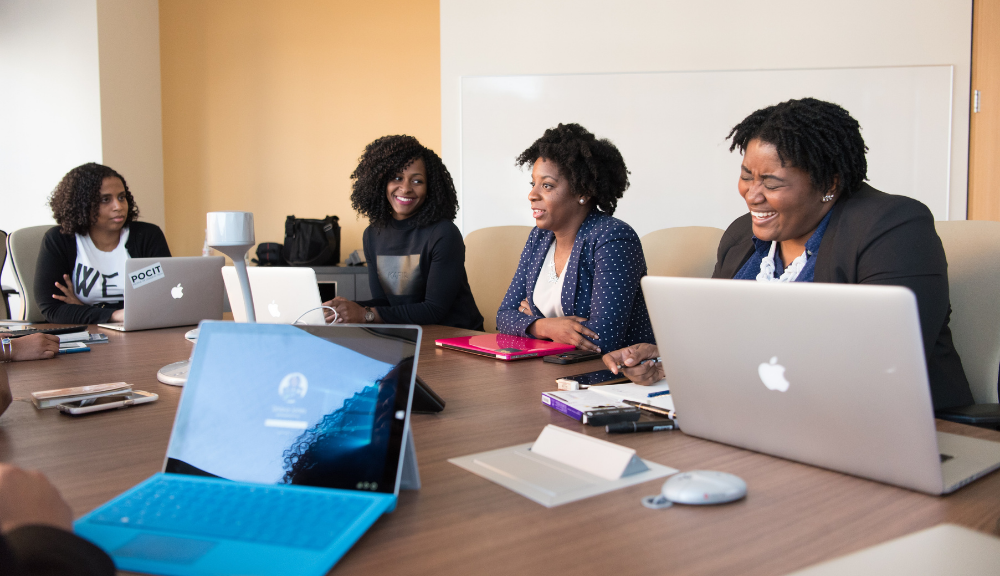How Leaders Can Leverage Coaching Skills to Create a Diverse and Inclusive Workplace
by Dionne L. Mack, SPHR
Mar 28, 2019 | 4 minutes read
Here’s what leaders need to know to cultivate an inclusive workplace.
While there continues to be an increase in the number of organizations outwardly supporting diversity, equality, and inclusion, studies reveal particularly slow progress toward truly diversifying executive and professional teams globally.
Organizations are simply unsure of how to employ proper inclusion and diversity strategies to cultivate an inclusive workplace—mostly because no one wants to cross any uncomfortable boundaries or step on anyone else’s toes, and change is hard.
But inaction is a costly mistake. In fact, the diversity of a work environment directly impacts organizational achievements and business results for the better.
Recent Forbes research has revealed that:
- Inclusive teams make better business decisions up to 87% of the time.
- Teams that comprise more inclusive perspectives (in terms of gender, age, geographical location, etc.) make decisions twice as fast with half the meetings.
- Decisions made and executed by diverse teams deliver 60% better results.
- Companies in the top quartile for gender and ethnic diversity on executive teams were more likely (25% and 36%, respectively) to have above-average profitability compared with companies in the fourth quartile.
All good news. Here’s the problem: Even organizations that recognize the value in diversity face challenges when trying to make it a reality.
- What does it take to affect real change?
- What does it actually look like to stand up and be a voice for others?
- How can you become a true leader in an inclusive workplace?
We know from the studies that diversity fuels innovation and increases financial performance. We also know that in the workplace, some differences—such as race, religion, gender identity, sexual orientation, political views, and generation—can create what feels like significant gaps. These gaps are often driven by our blindspots and biases which can be difficult to overcome.
Coaching helps you not only recognize your biases (conscious or unconscious), but also know what to do about them.
Building a competency in coaching offers a whole new set of knowledge and tools that will shift your perceptions and the way you communicate, allowing you to bring real awareness to the motivations and self-limiting factors that often impede diversity and inclusiveness in the workplace. In doing so, you’ll be able to lead permanent and profound shifts in the way individuals and teams engage and work together, cultivating a culture where team members feel valued, supported, and connected—an inclusive culture.
3 Key Components to Cultivate a Diverse and Inclusive Workplace
Gallup published a report on the three key components to cultivating a diverse and inclusive workplace. These include:
- Employees are treated with respect.
- Employees are valued for their strengths.
- Leaders do what is right.
Interestingly, there’s an underlying theme that connects all three of these requirements: mindset.
Only with a focused approach to understanding and transforming your own and others’ mindset can you foster mutual respect, promote individual and collective strengths, and overcome perceived biases in order to establish trust—the foundation for an inclusive work environment.
Traditional diversity and inclusion training is designed to help you “see” the differences in people’s experiences based on what they look like, how they were raised, and what their culture is. Training focused on coaching competencies takes this much further, showing you what you can do with that awareness, which translates to how you show up in the workplace—interacting with others, relating to them, empathizing with them, and communicating effectively.
The truth is we all have a choice when it comes to how we think and feel. Sometimes that choice is overshadowed by deeply rooted fears and limiting beliefs (which we aren’t often aware of), but it doesn’t have to be. iPEC’s Core Energy Coaching™ methodology teaches people to dig deeply, honestly, and objectively into their energy and mental programming. By tuning into these elements and focusing on how they impact everyday decisions and interactions, you define a clearer perspective from which to make connections and become a catalyst for culture shifts in the workplace.
Coaching skills can help you positively influence a work environment by:
Identifying root causes of problems.
Whether inclusion issues are coming from management styles, personality conflicts, or ineffective communication, you’re able to listen to yourself and others more deeply, cutting past unconscious biases to accurately identify what’s going on. By learning to ask empowering questions, you help managers and employees access innate knowledge and develop effective solutions.
Otherwise, you’re just treating a symptom, not a cause. And that’s likely to result in the problem manifesting in other places as well, which is frustrating. When you get to the root of the issue, you can enact sustainable change. Now you’ve opened up space for other dialogue, other objectives, and other successes.
Being more aware and showing up from a place of neutral objectivity.
Not only does coach training teach you to be more aware of subtle cues, but it gives you the framework and practice to respond to others from a compassionate, calm place. When individuals can view interactions dispassionately (and not through the filters of personal values, religion, past experiences, and worldviews), communication can become an effective exchange of ideas instead of a series of potential misunderstandings.
At the core, it’s about developing awareness, not just of others, but of self. What you say is shaped by your own beliefs. Coaching empowers you to acknowledge those barriers and communicate based on what IS, not what you THINK IS.
Walking your talk and setting an example for those around you.
Coaching is not just about what you do, but also who you become. The training changes who you are at the core of your being. And you, walking through the world in a new way, will impact others. Over time, you’ll notice them echoing your inclusive attitude and effective techniques, rather than keeping interactions bogged down with negativity. Leaders who consistently apply coaching techniques to communicate and problem-solve find that their environments become more harmonious and innovative. They elicit greater trust from employees and make room for diverse perspectives.
Ultimately, it’s not a question of what actions you take, what you want, or where you’re going, but rather who you become along the way.
Leadership is really just self-leadership, and the only way to effectively lead is to lead by example. Because, let’s be honest, “Do as I say, not as I do” just doesn’t work. Real, inspiring leadership is about becoming the person you want others to be.
When you start leading by example, you start shifting culture.
For positive change to really unfold, you have to win hearts, minds, and then hands. But be encouraged! You hold the power because it only takes ONE person to set that example. When you start showing up differently, the people around you will follow. And the entire culture will shift. It changes the whole functionality of the team, which allows for more empowering conversations and opens the door to talent and ideas that may never have seen the light.
Coaching skills matter so much more than you might think. They’re essential to fostering the kind of culture shift that integrates effective strategies for diversity and inclusion. They’re the key to unlocking greater potential for success—on both an individual and organizational level. They empower you to choose your mindset, and to help others do the same.
Curious how coach training can help you advance your career?


